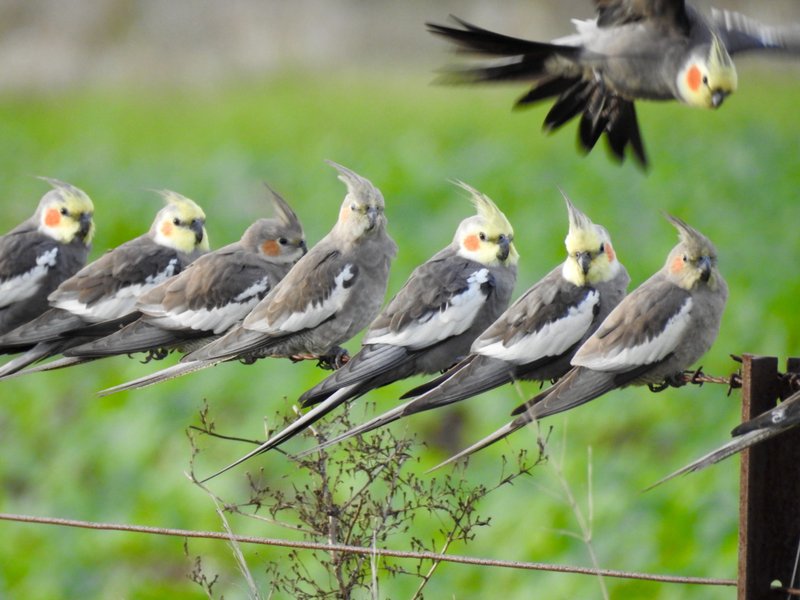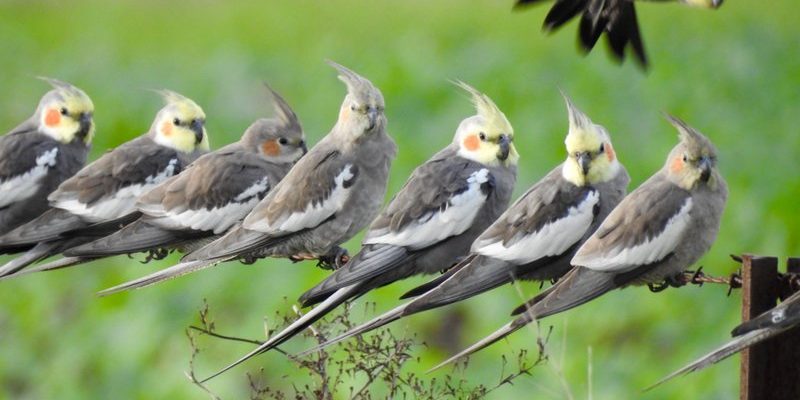
Let’s dive into the world of cockatiels and explore how these charming parrots evolved from their wild ancestors to become beloved pets in homes around the world. From their native Australian outback to your cozy living room, the evolution and history of the cockatiel is a journey worth uncovering.
Origins of the Cockatiel
Cockatiels belong to the family of parrots, known as the Psittacidae family. Their story starts in the grasslands and open forests of **Australia**, where they thrive in social flocks. You might be wondering what makes these birds so unique among their parrot relatives. Well, honestly, it’s their striking appearance and charming behavior. With their smooth feathers and bright cheeks, cockatiels stand out in a crowd—just like a fashionista at a casual gathering.
These birds are scientifically known as *Nymphicus hollandicus*. They were first discovered by European explorers in the late 18th century, who brought them back to Europe along with other exotic species. Imagine a time when these little aviators were part of a grand adventure, discovering new landscapes and faces. As they made their way across the globe, their beauty and social nature captured the hearts of many.
Domestication and Early Breeding
The domestication of cockatiels began in the early 20th century. Breeders started selectively pairing birds to enhance certain traits, particularly their color variations and temperament. This selective breeding was a game changer! Imagine craftsmen in a workshop, honing their skills to create the perfect masterpiece. Breeders focused on creating variations with different skin tones, leading to the vibrant, colorful cockatiels we know today.
The first cockatiels to be brought into captivity were typically the gray and white variations. Over time, however, breeders emerged with variants like the lutino and the pied. Each breed has its unique charm and personality traits. The growing popularity of these birds made them a common sight in households across the world. It was as if they had taken flight into the hearts of many, offering companionship and joy.
Color Morphs and Variations
Part of what makes cockatiels so special is the wide range of **color mutations** available today. This diversity is a product of selective breeding, and it’s almost like walking into a colorful art exhibit. You have lutinos, with their bright yellow feathers; pearls that flaunt intricate patterns; and the classic gray, which remains a timeless favorite.
Each color morph comes with its own set of personality traits. For instance, lutinos are often described as friendly and affectionate, while pearls might exhibit a more curious nature. Think about it like different personalities among friends—some are the life of the party, and others prefer a cozy chat over coffee. These variations not only add charm but also cater to different preferences among bird lovers.
Behavioral Traits and Social Nature
Cockatiels are renowned for their playful demeanor and social nature. They thrive on interaction, so keeping one as a pet is like adding a new member to the family. You might find yourself laughing as they mimic sounds or exhibiting quirky behavior, like tilting their heads sideways in curiosity.
In the wild, cockatiels live in flocks, which is why socializing is crucial for their happiness. They need companionship—either from other birds or from their human caregivers. It’s important to spend time with them daily, as they can get bored and lonely without interaction. If you’ve ever felt the warmth of a friend’s laughter, you’ll understand how meaningful that connection can be for these little guys.
Cockatiels in Popular Culture
Over the years, cockatiels have made their presence known in popular culture, appearing in movies, TV shows, and even music. They have become symbols of joy and freedom, often depicted alongside characters who mirror those traits. Picture a scene with a happy family in a cozy living room, with a cockatiel perched nearby, adding to the atmosphere.
These birds have also made their way into many people’s hearts through social media, where they showcase their playful antics and charming personalities. You might see videos of cockatiels dancing or playing peek-a-boo, reminding us that joy comes in small, feathery packages. Their popularity on platforms like Instagram and TikTok has further endeared them to a new generation of bird lovers.
Challenges Faced by Cockatiels
While cockatiels bring a lot of joy, they also face certain challenges, especially as pets. Like all living beings, they thrive best in environments that cater to their needs. For instance, cockatiels can suffer from boredom, which can lead to destructive behavior. Providing them with engaging toys and social interaction can help prevent this.
Additionally, health issues such as respiratory problems can arise if their living environments aren’t cared for properly. Think of it like maintaining a car—regular check-ups and tune-ups keep everything running smoothly. A clean cage and fresh food are key to a healthy, happy cockatiel. Just like us, they need a little TLC to stay in tip-top shape!
The journey of the cockatiel from the Australian outback to homes around the world is filled with twists and turns, showcasing their resilience and adaptability. Their evolution highlights how we’ve shared our lives with these delightful birds, forming bonds that enrich our daily experiences.
So, whether you’re a lifelong cockatiel enthusiast or just diving into the world of these feathered friends, remember that each cockatiel has a unique story to tell. After all, they’re not just pets—they’re companions that add warmth and joy to our lives. As you think about bringing a cockatiel into your home, imagine all the laughter, shared moments, and memories waiting to unfold.

